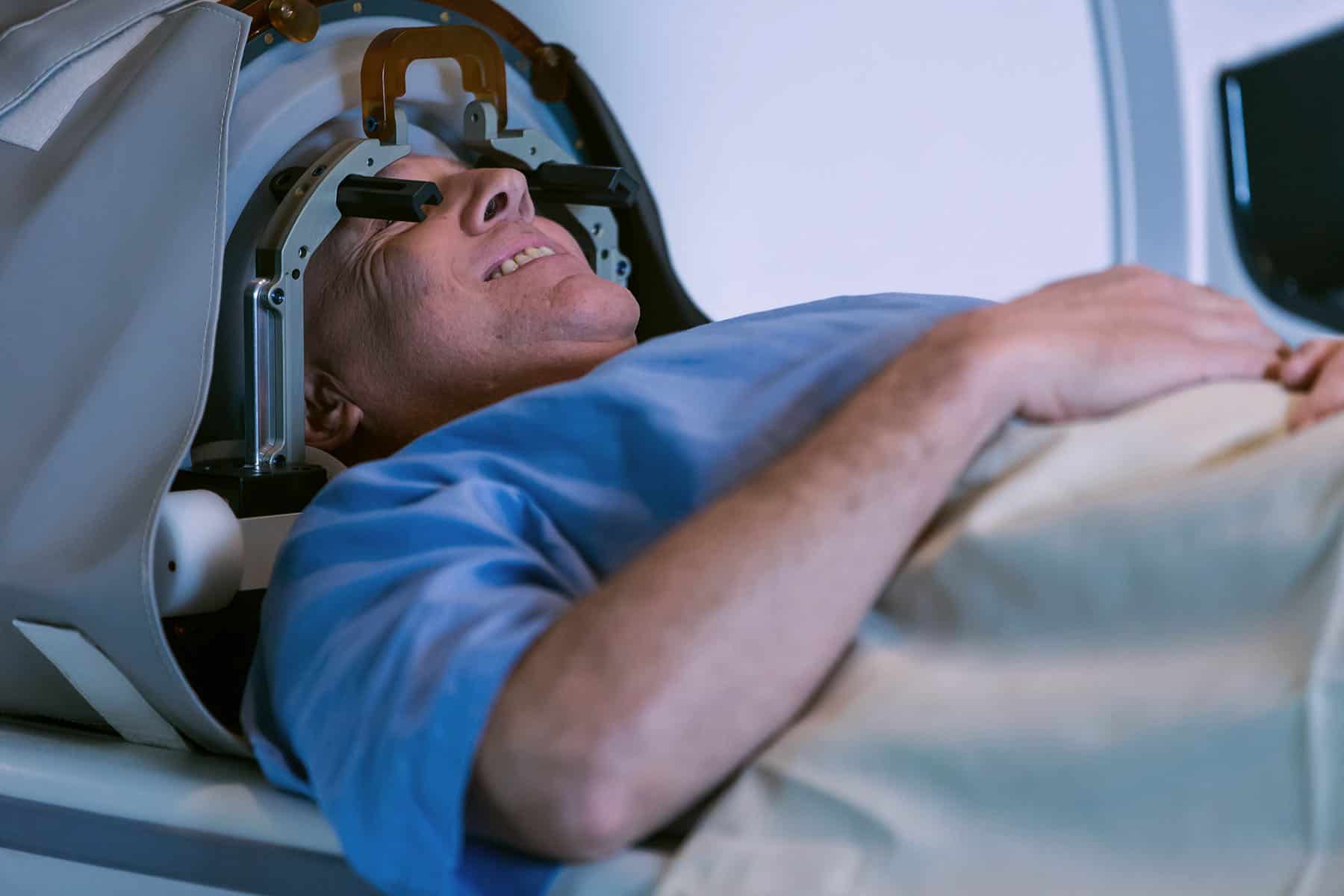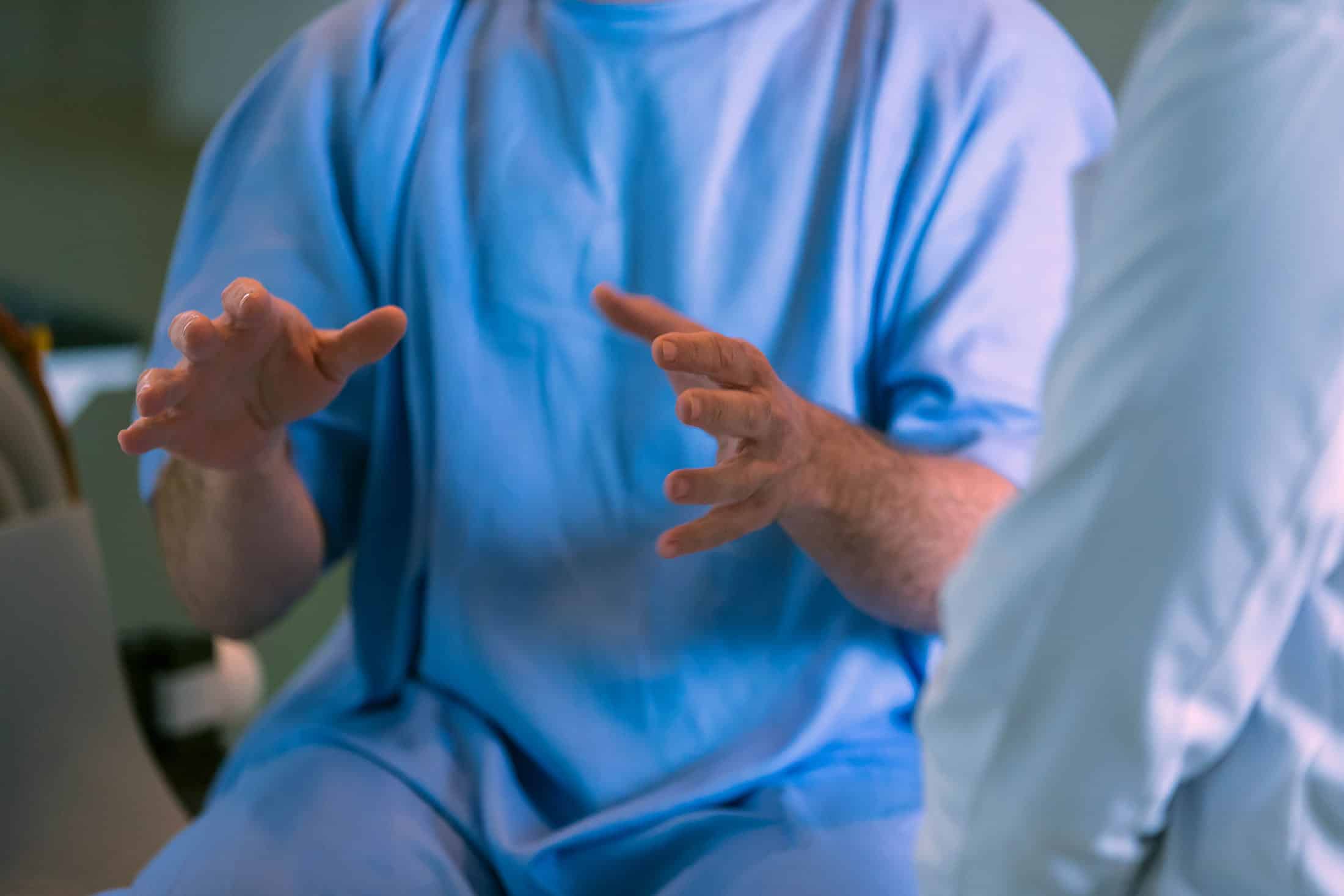ESSENTIAL TREMOR | PARKINSON’S DISEASE | NEUROPATHIC PAIN | TREATMENT ADVANCEMENTS
WHAT IS MRGFUS?
MR-guided focused ultrasound (MRgFUS) is a cutting-edge, non-invasive medical procedure used primarily to treat essential tremor, tremor-dominant Parkinson’s disease, various other types of tremor, and also certain types of chronic pain.
This revolutionary treatment frequently offers immediate relief or significant symptom improvement in most patients after a single treatment session.
The procedure utilises focused ultrasound waves that can penetrate the skull without any incisions or drilling.
MRgFUS is performed with the patient awake to assess the potential benefits and rule out side effects through a non-permanent “test lesion,” ensuring both safety and reliability.
If you have additional questions, please email focus@precisionhealth.com.au.
Watch Nicholas’ remarkable story on YouTube
HOW DOES MRgFUS WORK?
MRgFUS is an advanced neurosurgical platform that delivers ultrasound energy with unparalleled precision deep into the brain.
This procedure creates small, targeted lesions within the brain tissue without the need for incisions or anaesthesia.
The aim is to create a very small scar in a specific region of the brain.
During the treatment, the neurosurgeon, neurologist and neuroradiologist operate from a computer console in the MRI control room, controlling the procedure with a computer and mouse, similar to using a surgical scalpel.
The convergence of multiple ultrasound beams at the focal point generates important biological effects, disrupting neural pathways that cause tremors or other neurological issues.
The main indications for MRgFUS include essential tremor, Parkinson’s disease, and certain pain conditions. This treatment serves as an alternative to open brain surgery, including deep brain stimulation, and medications.
Advanced technology allows the creation of ultrasound waves powerful enough to penetrate the skull, and state-of-the-art software adjusts the delivery based on individual skull shape and thickness.
Up to 1024 ultrasound waves precisely target and ablate deep brain structures without any surgical incisions or manual brain manipulation.
MR imaging guides the treatment process, providing high-resolution images, real-time thermal feedback, and continuous monitoring to ensure accuracy.
Have a question? Email your referral or enquiry to focus@precisionhealth.com.au.
HOW CAN TREMOR BE TREATED?
The treatment approach for tremor and movement disorders varies depending on the severity and patient response.
Options include:
- Medications
Beta-blockers, anti-Parkinsonian medications, certain anti-seizure medications, and some anti-anxiety drugs can help manage tremor, although side effects may limit their effectiveness. - Thalamotomy (traditional open procedure)
This procedure involves drilling a small hole in the skull and inserting a radiofrequency probe through the brain into the thalamus to destroy tissue. Risks include bleeding, stroke, infection, seizures, and death. - Deep brain stimulation
A surgical procedure involves drilling a hole in the skull, inserting an electrode into the thalamus or posterior subthalamic area, and connecting it to a battery (implantable pulse generator) in the chest region. Risks include infection and hardware complications, requiring regular programming and potential battery replacement. - MRI-Guided Focussed Ultrasound (MRgFUS)
A modern alternative to traditional thalamotomy and deep brain stimulation, MRgFUS does not require incisions, skull holes, or brain probes.
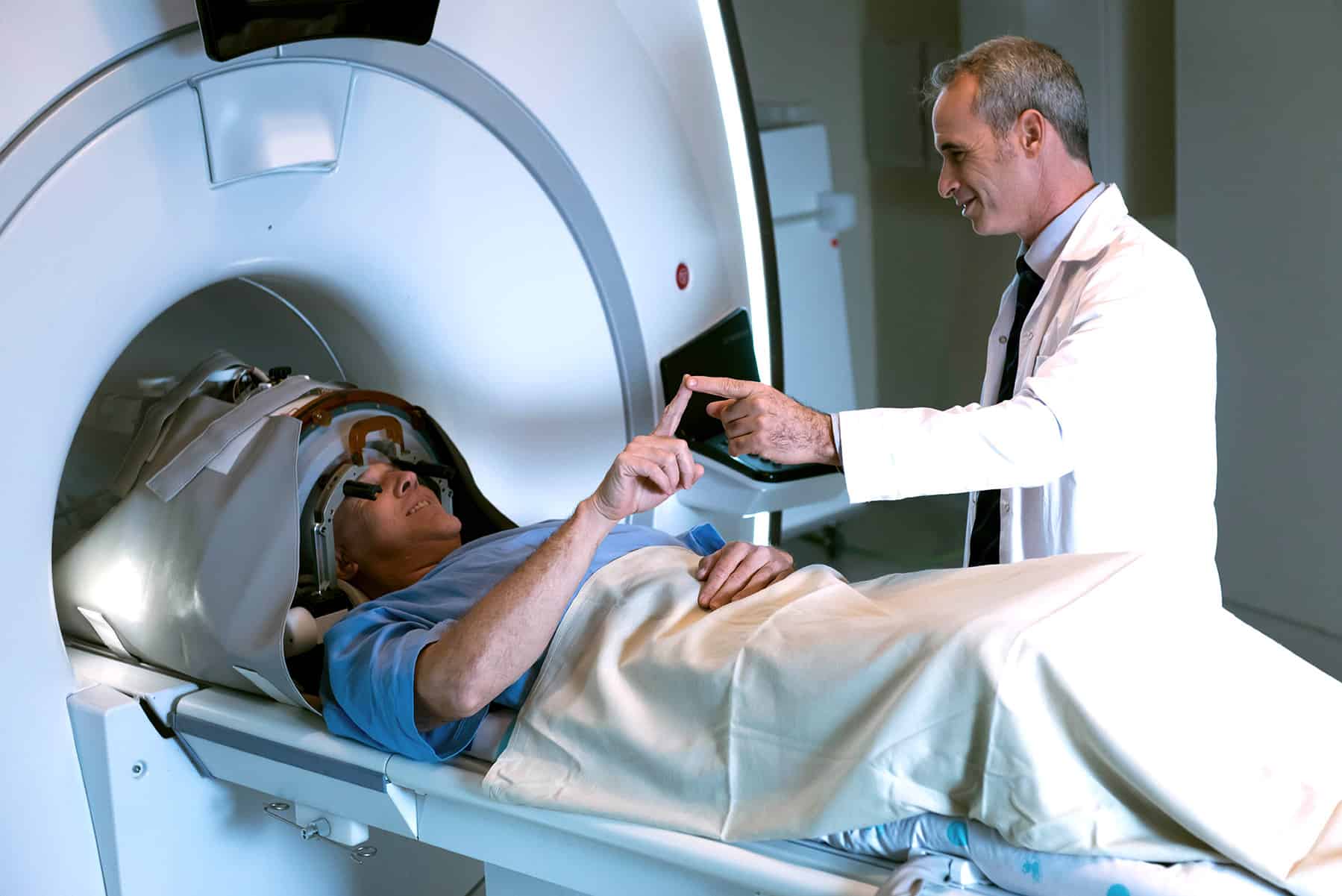
Are You Ready To Get Started?
WHAT ARE THE BENEFITS OF FOCUSED ULTRASOUND?
- It is non-invasive, with generally lower major risks than open surgery and a shorter recovery time
- It is carried out as a single treatment. Patients typically recover rapidly and quickly return to their usual daily activities (frequently within the next day or two)
- Focused ultrasound frequently offers rapid improvement of symptoms.Other technologies such as Gamma Knife radiosurgery have a significant delay before clinical improvement is seen, and deep brain stimulation requires regular programming of the electrical device, and either frequent recharging or further surgery to replace the battery when it expires
- In contrast to stereotactic radiosurgery lesioning, focused ultrasound does not use radiation, thereby avoiding the side effects of radiotherapy.
- No anaesthetic is required, therefore patient with significant medical comorbidity are eligible for this treatment
HOW CAN I BE ASSESSED FOR SUITABILITY FOR THIS TREATMENT?
Patients with various types of tremor, Parkinson’s disease, dystonia, and other movement disorders can be assessed for suitability for MRgFUS.
The assessment process includes:
- Confirming the diagnosis and its impact on quality of life.
- Measuring skull density with CT scans and assessing brain morphology with MRI.
- Utilising standard rating scales to evaluate the condition.
- Considering other relevant medical conditions and medications.
The assessment team typically comprises a neurologist, neurosurgeon, neuroradiologist, and may include a rehabilitation physician and neuropsychologist.
Have a question? Email your referral or enquiry to focus@precisionhealth.com.au.
ARE SOME PATIENTS NOT CANDIDATES FOR MR-GUIDED FOCUSED ULTRASOUND?
MRgFUS may not be suitable for patients who:
- Have non-MRI compatible implants, such as certain pacemakers, neurostimulators, or orthopaedic implants.
- Exhibit extensive scarring on the scalp, large holes in their skull, or who have undergone medium or large cranioplasties following head trauma.
- Have brain tumours.
- Are on dyalisis.
- Cannot remain still on a treatment table for up to 4 hours.
- Cannot discontinue antiplatelet or anticoagulation therapy.
- Suffer from significant claustrophobia.
HOW DO I REQUEST AN INITIAL CONSULTATION?
If you are suffering from Essential Tremor, Parkinson’s disease or another type of tremor or movement disorder and would like to know whether you might be suitable for treatment with focused ultrasound, please request a consultation and our clinical care coordinator will contact you:
Alternatively, please email your referral or enquiry to focus@precisionhealth.com.au
Our assessment process includes:
- Confirmation of your diagnosis and its impact on your quality of life.
- Other relevant medical condition and medications you are on.
- Brain scanning with MRI and CT
Our clinical assessment team includes a movement disorder neurologist and neurosurgeon.
Our clinical care coordinator will coordinate all aspects of your assessment from the time we receive your referral. If you have any questions, please contact us.
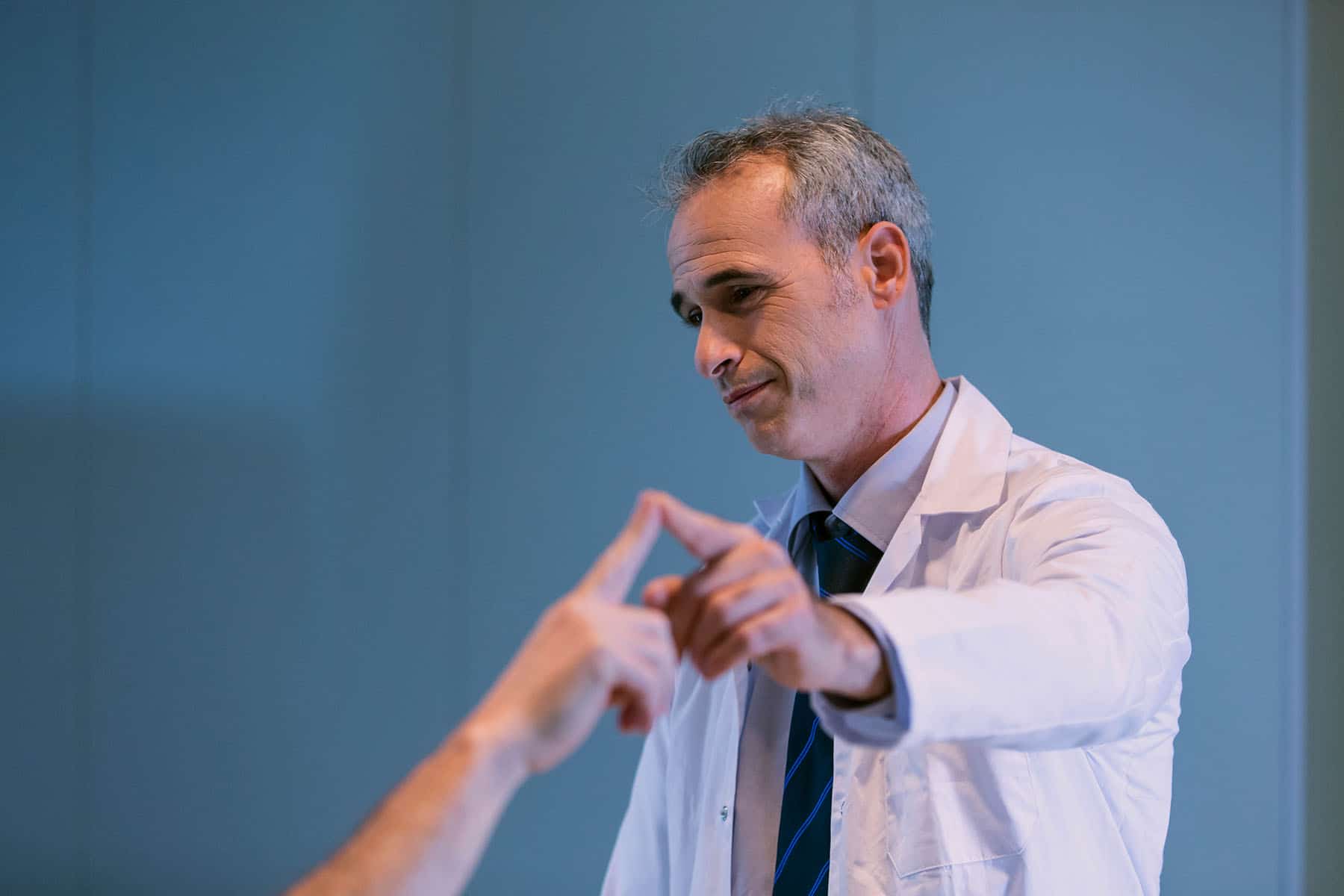
Are You Ready To Get Started?
WHAT IS THE TREATMENT PROCESS?
The MRgFUS treatment process involves several key steps:
- Patient Preparation
Before treatment, a CT scan assesses skull shape, thickness, and density. Vital signs are monitored. - Planning, Testing and Target Verification
MRI images are used to plan the treatment and precisely identify the target within the brain. Low-energy ultrasound is applied to pinpoint the target, followed by moderate-level ultrasound pulses to evaluate therapeutic response and potential side effects. - Treatment
Up to 1024 ultrasound waves converge at the target within the thalamus, creating temperatures of approximately 55°C to ablate the tissue. Active monitoring ensures accuracy and safety, guided by MRI feedback. Treatment is typically unilateral, focusing on the dominant or most severely affected hand. - Assessment
Clinical evaluation occurs during and immediately after the procedure, confirmed with an MRI scan immediately post-procedure. The entire procedure typically takes 2-3 hours, with many patients experiencing immediate tremor reduction and a quick return to daily activities.
If you have additional questions, please email focus@precisionhealth.com.au.
WHAT ARE THE OUTCOMES?
Most patients who undergo MRgFUS experience significant tremor improvement during the treatment process.
Published outcomes indicate the following improvements in tremor compared to baseline (pre-treatment):
- 1 yr after treatment- 69%
- 2 yrs- 75%
- 3 yrs- 76.5%
Have a question? Email your referral or enquiry to focus@precisionhealth.com.au.
WHAT ABOUT SIDE EFFECTS?
Like any surgical procedure, MRgFUS may have potential side effects and complications, although they are generally mild and temporary.
Common side effects include:
- Numbness
- Headache during the procedure
- Numbness and tingling in the lips or fingertips
- Unsteadiness and balance problems
- Speech or swallowing problems
- Altered taste
Most side effects start within days or weeks after treatment and resolve in many cases.
Long-term safety data shows that approximately 74% of adverse events are mild, with almost 50% resolving within 30 days of the procedure.
HOW LONG DOES THE TREMOR REDUCTION LAST?
Studies provide up to 3-4 years of outcome data, with the majority of patients maintaining a good and sustained benefit during this period.
The 12-month recurrence rate is around 5% for essential tremor, and around 10% for tremor-dominant Parkinson’s disease.
WHAT IS THE PROCESS TO BE ASSESSED?
- Register your interest You can contact our office by phone (03 8862 0000), email (focus@precisionhealth.com.au) or via our appointment request form to register your interest and begin the assessment process.
- Phone or Email Communication A member of our team will call you to obtain some relevant information, screen you for suitability, and arrange the medical and radiological assessments (if appropriate).
- Medical Assessment The key medical assessments are:
- Consultation with a movement disorder neurologist
- CT & MRI Scan
- Consultation with neurosurgeon, Prof Richard Bittar
The information obtained during your consultations and scans are collated and assessed by our multidisciplinary team, and a treatment recommendation is made.
- Scheduling the Procedure
If you have additional questions, please email focus@precisionhealth.com.au.
COMMON QUESTIONS
WHAT ARE THE COSTS INVOLVED WITH THE ASSESSMENT FOR THIS TREATMENT?
Consultations with the neurologist and neurosurgeon take place in their consulting suites and are billed at their standard specialist rates.
This information, together with the likely Medicare rebates, will be provided to you before your booking is confirmed.
In order to be certain that you receive a Medicare rebate, please ensure that you obtain a referral from your GP or neurologist.
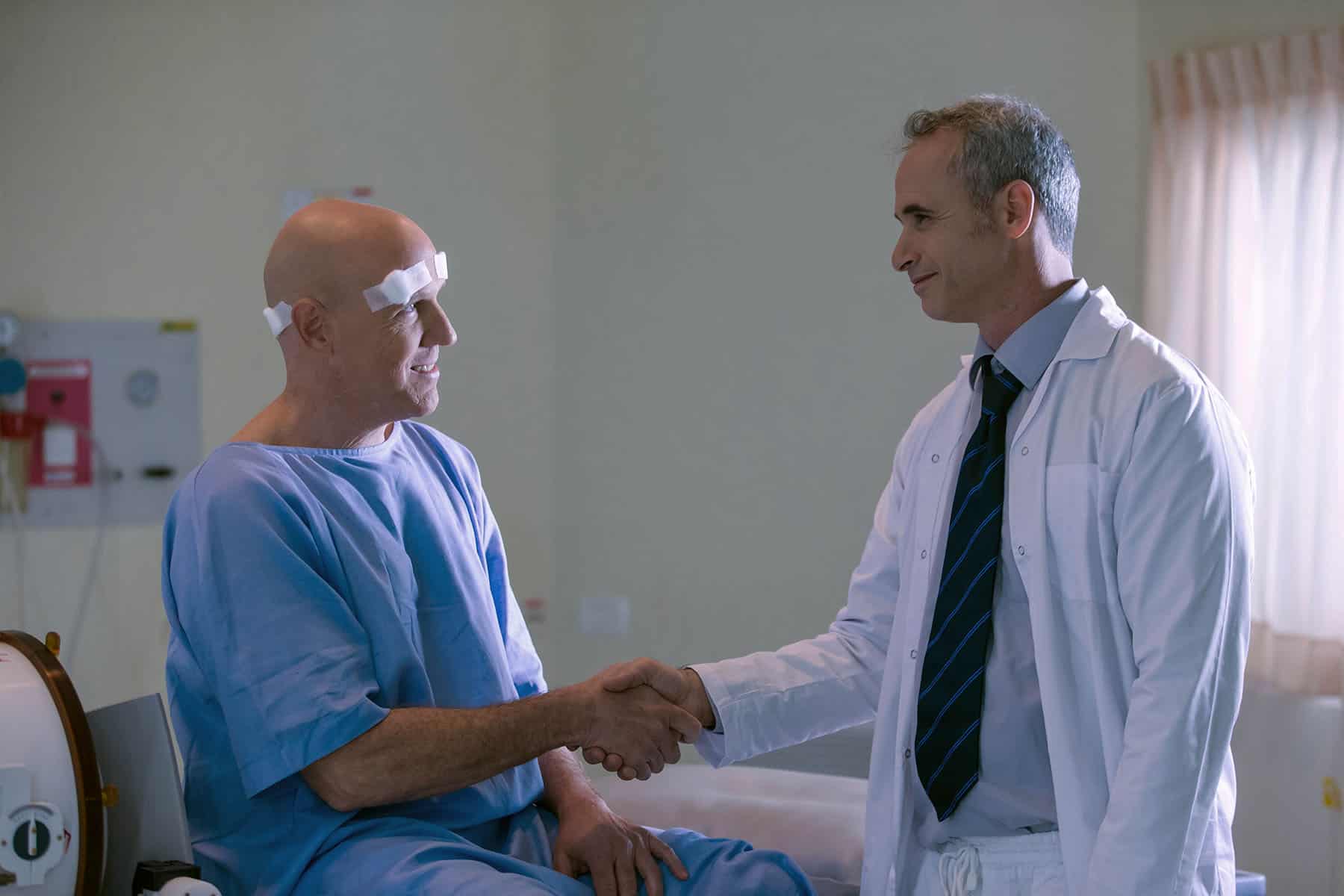
Are You Ready To Get Started?
DO YOU ACCEPT REFERRALS FROM INTERSTATE OR OVERSEAS?
Yes, we do accept referrals from both interstate and overseas.
Our assessment process can be tailored to accommodate individual patient circumstances and travel plans.
Have a question? Email your referral or enquiry to focus@precisionhealth.com.au.
IS THE MRGFUS PROCEDURE COVERED BY MEDICARE OR PRIVATE HEALTH FUNDS?
As of March 1, 2024 Medicare rebates are applicable for certain items of the procedure for Essential Tremor patients.
DO I HAVE TO STAY IN HOSPITAL OVERNIGHT?
In most cases, you will not need to stay in hospital overnight.
If you do need to stay for observation overnight following your procedure, your specialists will talk you through this.
AM I ABLE TO DRIVE OR TRAVEL BY AIR FOLLOWING THE PROCEDURE?
Patients should avoid driving for 2 weeks after the procedure, but they can typically travel by air a few days after the treatment.
WHEN CAN I RETURN TO NORMAL ACTIVITIES AFTER THE PROCEDURE?
We recommend light physical activity for 2-3 weeks after the procedure, after which normal activities can typically be resumed.
WHAT FOLLOW-UP IS RECOMMENDED?
Patients will undergo several clinical reviews during the first 12 months after the procedure, followed by annual check-ups.
An MRI brain scan is scheduled for a few days and several months postoperatively.
HOW LONG DOES THE PROCEDURE TAKE?
The entire MRgFUS procedure, from preparation to leaving the treatment table, typically lasts about 2-3 hours.
WHAT HAPPENS IMMEDIATELY AFTER THE FOCUSED ULTRASOUND TREATMENT?
Patients are moved to a recovery room for observation and are usually discharged at that time.
WHAT ARE THE BENEFITS AND ADVANTAGES OF MR-GUIDED FOCUSED ULTRASOUND?
MRgFUS offers several key benefits and advantages:
- No incisions or skull drilling required
- No implantation of hardware or devices
- No radiation exposure
- No general anaesthesia needed
- Minimal risk of infection or bleeding compared with incision-based procedures
- Real-time assessment of treatment efficacy and safety during the procedure
WHAT ARE THE SIDE EFFECTS OF MR-GUIDED FOCUSED ULTRASOUND?
The most common side effects include:
- Nausea
- Headache during the procedure
- Temporary numbness and tingling in the lips or fingertips
- Temporary unsteadiness and balance problems
- Temporary speech or swallowing problems
These side effects sometimes start several days or weeks after treatment.
If you have additional questions, please email focus@precisionhealth.com.au.
WHAT ARE THE LONGER-TERM RISKS AND COMPLICATIONS OF MR-GUIDED FOCUSED ULTRASOUND?
The longer term risks and complications include:
- Tremor could return months or years later
- Lack of improvement in tremor
- Muscle weakness, unsteadiness, sensory loss, or numbness or tingling in fingers or other areas of the body
HOW DO I KNOW THAT MR-GUIDED FOCUSED ULTRASOUND IS THE BEST OPTION TO TREAT MY TREMOR?
Our medical team will conduct a complete assessment of your condition and discuss the most suitable treatment options, which may include MR-Guided Focused Ultrasound.
Typically, MRgFUS may be considered if you have:
- A confirmed diagnosis
- Tremor inadequately relieved by medications
- Tremor limiting your ability to perform daily activities
At Precision Brain Spine and Pain, we are committed to providing the highest quality care for patients with movement disorders through MR-guided focused ultrasound (MRgFUS). Our multidisciplinary team includes expert fellowship-trained functional and stereotactic neurosurgeons, neurologists, neuroradiologists, highly skilled MR technicians, and a dedicated nursing team.
Please note that this page offers general information and does not replace personalised advice from your healthcare provider. Always consult with your healthcare team to make informed decisions about your treatment options.
